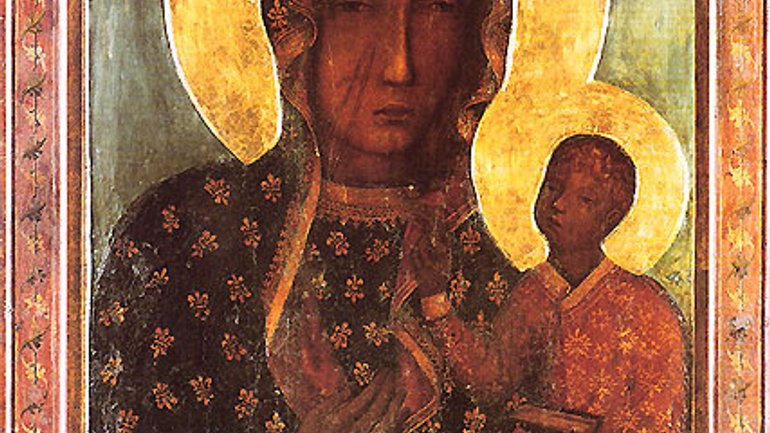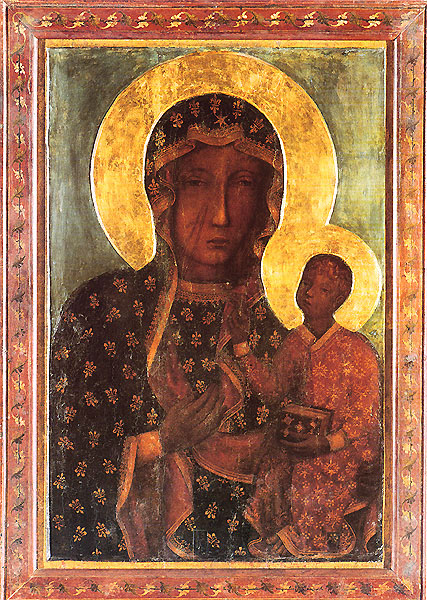Our Lady of Czestochowa icon touring Spain

 A replica image of Our Lady of Czestochowa is currently traveling throughout Spain on a pro-life and pro-family pilgrimage that will span 12,000 miles and 23 countries.
A replica image of Our Lady of Czestochowa is currently traveling throughout Spain on a pro-life and pro-family pilgrimage that will span 12,000 miles and 23 countries.
Dubbed “From Ocean to Ocean,” the tour began last September in Vladivostok on Russia’s Pacific coast and will conclude at the Shrine of Fatima on the Atlantic coast of Portugal.
Organizers of the tour hope that “the number of people who discover and defend the dignity of the human being from conception to natural death will continuously increase.”
The famous image of Mary, normally housed at the Jasna Gora Shrine in Poland, has been in Spain since Dec. 15, visiting more than 25 dioceses.
Its stop in the region of Murcia was especially significant as the area was hit by a 5.1-magnitude earthquake in May 2011, which left nine people dead and 324 injured, in addition to causing widespread damage. Masses, holy hours and other services were celebrated as the icon visited the region’s cities of Vera Cruz and Lorca.
In the region’s capital city of Murcia, the icon visited the Poor Clare convent, where the nuns gathered for a special rosary. The convent is one of the important architectural sites in the city, as it was constructed over an ancient Arab palace.
From Feb. 7-14, the image will be in Madrid for a series of prayer vigils in defense of human life.
The icon of Our Lady of Czestochowa - one of the most venerated images in Poland - depicts the Virgin Mary holding the child Jesus in her arms. But it also has Ukrainian (or rather Ruthenian) history. The Ruthenian Prince Leo brought the Black Madonna icon to his royal palace, according to legend.
Prince Leo is believed to have received the icon either from the Byzantine Emperor in Constantinople or Charlemagne, based on which legend you prefer to believe.
And apparently, legend says it was St. Luke who painted the icon upon a table built by Jesus Christ.
Mary posed for the portrait. While he painted, she told the story of Jesus' life, which would later serve as the foundation upon which Luke would base his gospel.
By the time the icon reached Belz, the surrounding region was known as Ruthenia, as the Ukrainian identity would only emerge many centuries later.
In 1382, a Muslim nation in the Crimea known as the Tatars had invaded Belz. During the raid, a Tatar arrow pierced through the Virgin Mary's neck, a mar that is visible to this day. Fearful that the icon would perish, Prince Ladislaus Opolski decided to take and hide it in one of his castles in the Silesia region of Poland.
Several legends exist to explain how the icon eventually wound up in Czestochowa, a city in southern Poland.
In one popular version, the Virgin Mary appeared to the prince at Jasna Gora ("bright hill"), just outside of Czestochowa, telling him this should become the icon's new home.
After placing it in a small church, Prince Ladislaus built a chapel and Pauline monastery to house and preserve the icon, which remain to this day.
What is widely accepted to be the original icon is still in the church, though no one can say with certainty when it was created.
Through the centuries, the Black Madonna of Czestochowa emerged as Poland's most revered religious symbol.
Blessed Pope John Paul II had a special devotion to Our Lady of Czestochowa and kept a copy of the image in his papal apartment at the Vatican.









